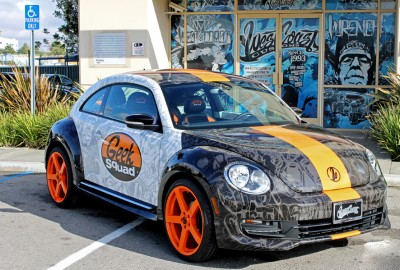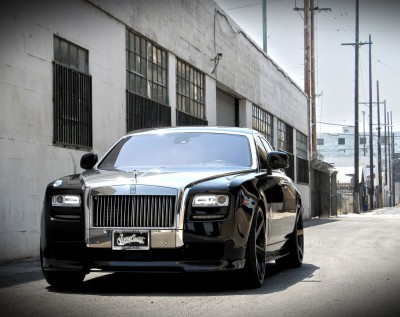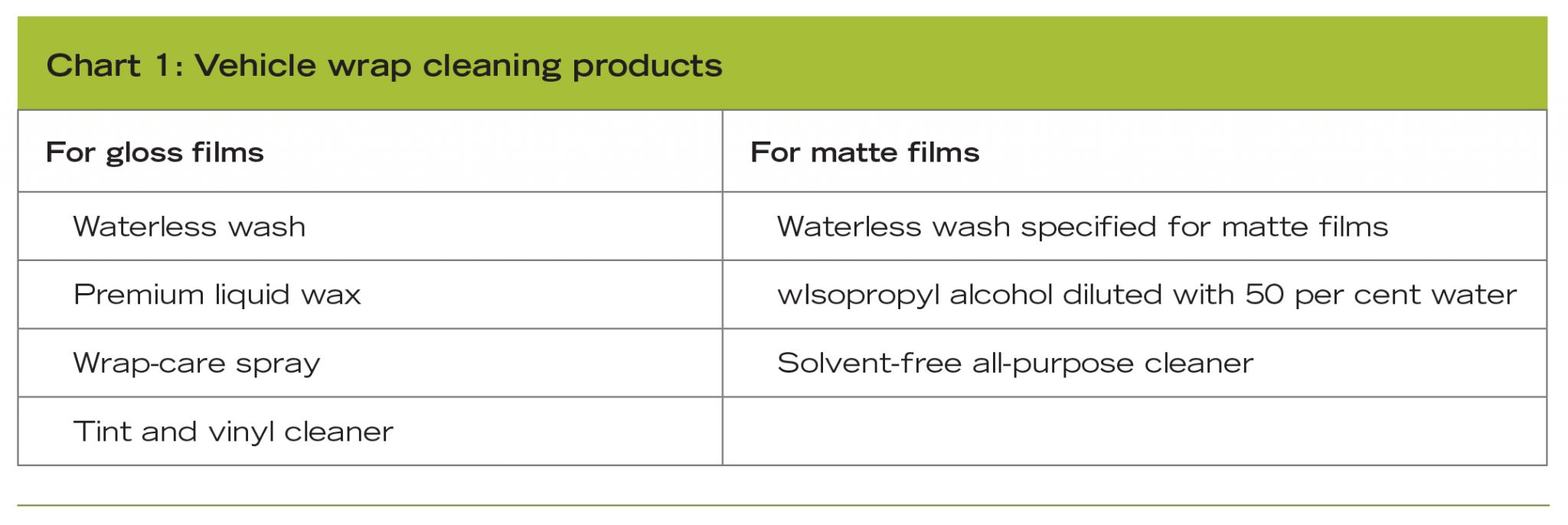Hand-washing a vehicle wrap is very similar to hand-washing a painted car:
- Pre-rinse. The first step is to rinse the vehicle with clean water, which will help both remove existing particles—e.g. grit—and prevent subsequent scratching.
- Wash. Gently agitate the soapy mild-detergent-and-water solution with a soft cloth or a synthetic or natural sponge, starting from the top of the vehicle and working down. Avoid unnecessary scrubbing, which could cause too much abrasion along the graphic film’s surface.
- Rinse. When finished washing with the solution, it is important to rinse the graphic again thoroughly with clean water.
- Dry. Allow the water to dry naturally or dab the surface dry with a chamois or a soft, non-abrasive towel, being careful not to lift any of the film edges.
While hand-washing is the preferred method, some vehicle owners will instead use a pressure washer, in which case they should follow these guidelines:
- Keep the water pressure below 8,274 kPa (1,200 psi).
- Keep the water temperature below 80 C (180 F).
- Keep the nozzle at least 305 mm (12 in.) away from the graphics’ edges.
- Keep the nozzle perpendicular (i.e. at 90 degrees) to the graphics. This will help avoid chipping or lifting the edges.
- Use a nozzle with a 40-degree wide angle spray pattern.

 If a vehicle wrap is cleaned in sunshine, it is easy to end up with streaks. A shaded area is recommended instead, preferably a garage.
If a vehicle wrap is cleaned in sunshine, it is easy to end up with streaks. A shaded area is recommended instead, preferably a garage.
When using a pressure washer, any excessive pressure or spraying at the wrong angle can cause damage and create failure points in your graphics.
Driving the vehicle through a brushless automatic-spray car wash is acceptable if there is no other way to clean it, but the wax option should be skipped. It is important to avoid waxes that contain petroleum distillate, which can damage a wrap.
An automated brush wash must also be avoided. The brushes may catch the edges of the wrap’s panels or decals, creating new potential points of failure. They can even leave scratches in the graphics.
Without water
Another good option for cleaning a vehicle wrap is to use ‘waterless wash’ products. These can help improve or maintain the gloss level and performance of the film. In fact, if the vehicle is not overly dirty in the first place, a waterless wash may be the preferred option over hand-washing.
For vehicles that are very dirty, however, the best option is to hand-wash with water and detergent first, then apply a waterless wash for just the final touches.
If a waterless wash contains wax, it should not be used on a matte wrap, as it will fill in the texture and leave unwanted glossy, shiny spots. There are more suitable waterless washes for matte films, but a 50-50 mix of water and isopropyl alcohol will also work well to clean cars wrapped with these materials.
If the wax does not contain petroleum distillates, however, then its application is okay, and indeed, encouraged for glossy-finish wraps. Some waterless-wash-and-wax combinations are very good options, as long as the vehicle is not too dirty. As with detergents, it is a good idea to test any new waterless wash on an inconspicuous area of the vehicle before applying it to the entire exterior surface.





